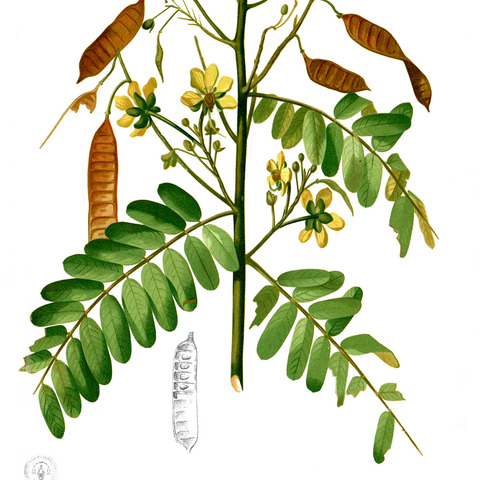Shrub, erect, to 2 m high, pubescent on vegetative parts, inflorescence, sepals and ovary, otherwise glabrous. Leaves 15–17 cm long including a terete petiole 10–15 mm long; stipules acicular, caducous; leaflets in 15–18 pairs spaced 5–7 mm apart, lanceolate or narrowly elliptic, 35–45 mm long, 6–8 mm wide, increasing medially, broadly acute or obtuse; glands absent. Inflorescences of 8–10 flowers, in upper axils, forming a loose, many-flowered panicle; peduncle 10–20 mm long; pedicels 15–20 mm long; bracts subpersistent. Petals to 8 mm long. Fertile stamens 7, with 3 adaxial staminodes; filaments subequal, very short; fertile anthers unequal, the largest two c. 6 mm long, the others c. 4 mm long. Pod flat, 7–9 cm long, 7–10 mm wide, straight, entire. Seeds lustrous, with a linear areole.
A small tree. It grows 10 m high. The leaves have 8-24 pairs of leaflets. They are 2-6 cm long by 1-1.5 cm wide. They are oblong with a blunt tip. The young leaves have yellow hairs underneath. The flowers are yellow. They are in dense branched clusters at the ends of twigs. The fruit are 8-16 cm long. They are yellow. They split open when mature.


